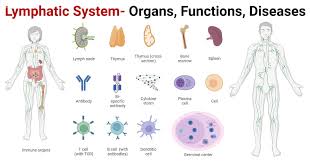How to fix my arthritis?
The right balance of nutrition will help reduce the pain and improve the mobility in joints. A small reduction in weight may help alleviate arthritis symptoms and reduce pain. Even losing 5% for an average of 500 pounds can be helpful. So how do we lose weight and or fix our arthritic symptoms? Your bodies lymphatic system is the natural detox system. It is the cellular layer decongestion system. All your organs, tissues, bones are composed by the 100 trillion cells in your body. Immune, respiratory, endocrine systems too. The lymphatics run extensively through our body to clean an decongest it.
The Impact of the Lymphatic System on Arthritis: Understanding and Managing Joint Pain
Arthritis is a prevalent condition that affects millions of people worldwide, leading to debilitating joint pain and inflammation. While many are aware of common treatments and symptoms, the underlying systems that contribute to arthritis, such as the lymphatic system, are often overlooked. This article explores how the lymphatic system influences arthritis, its symptoms, and various pain management strategies, including natural remedies and medical treatments.
Understanding the Lymphatic System
The lymphatic system is a crucial part of the body's immune system and fluid balance. It comprises a network of vessels, nodes, and organs that transport lymph, a fluid containing infection-fighting white blood cells, throughout the body. The primary functions of the lymphatic system include:
- Fluid Balance: It helps maintain the balance of fluids in the body by draining excess fluid from tissues and returning it to the bloodstream.
- Immune Function: The lymphatic system plays a vital role in the immune response, helping to identify and fight infections and diseases.
- Waste Removal: It assists in the removal of metabolic waste and toxins from tissues.
The Connection Between the Lymphatic System and Arthritis
The lymphatic system significantly impacts arthritis, particularly in terms of inflammation and pain management. Here are some key ways it affects arthritis which is causing pain.:
1. Inflammation Regulation: The lymphatic system helps drain excess fluid and inflammatory cells from the joints. When the lymphatic system is functioning optimally, it can reduce joint inflammation, which is critical in arthritic pain management and it's symptoms.
2. Immune Response: In autoimmune forms of arthritis, such as rheumatoid arthritis, an overactive immune response can lead to chronic inflammation and pain. A well-functioning lymphatic system helps regulate this immune response, potentially alleviating some symptoms. It balances your immune system.
3. Toxin Removal: The lymphatic system aids in removing toxins and metabolic waste from tissues. Poor lymphatic function may lead to the accumulation of these substances, exacerbating chronic pain and discomfort associated with arthritis.
4. Fluid Balance: Maintaining fluid balance is essential for managing swelling and pain in affected joints. The lymphatic system helps prevent excessive fluid accumulation, which can lead to painful joints and inflammation, acute pain. You help balance your joint fluid.
Recognizing Arthritis Symptoms
Arthritis encompasses various conditions, including osteoarthritis and rheumatoid arthritis, each with unique symptoms. However, common symptoms include:
- Joint pain and stiffness; general stiffness
- Swelling and inflammation
- Reduced range of motion
- Tenderness in affected areas
- Fatigue and general malaise
Understanding these symptoms is crucial for effective management and treatment.
How to Fix My Arthritis: Pain Management Strategies
Arthritis requires a multifaceted approach that combines medical treatments, lifestyle changes, and natural remedies. Here are several strategies to relieve arthritis pain and improve joint function:
Arthritis Pain and Pain relief
- Pain Medication: Over-the-counter pain medications, such as non-steroidal anti-inflammatory drugs (NSAIDs), can provide temporary relief from arthritis pain. Prescription medications may also be necessary for more severe cases. But, medical treatment options are less than appealing to us. Never the less, anytime you are in less pain, is a good thing as it also helps reduce stress. When you reduce stress it also reduces inflammation at the cellular layer, overall. So with that being said, any medical devices, proper, info that comes from medical journals is great info...
- Disease Modifying Antirheumatic Drugs (DMARDs): For rheumatoid arthritis, DMARDs can slow disease progression and help manage symptoms.
- Topical Creams: Topical medications containing anti-inflammatory ingredients can be applied directly to painful joints for localized relief better range of motion in those areas which will help relieve joint pain.
- Injections: Corticosteroid injections may be used to alleviate pain in specific joints.
- Surgery: In severe cases, procedures like joint fusion or total joint replacement may be necessary to restore function and relieve pain.
Physical Therapy
Working with a physical therapist can help improve range of motion and strengthen the muscles surrounding painful joints. Physical therapy may include:
- Targeted Exercises: Tailored exercises can enhance flexibility and strength in affected joints.
- Massage Therapy: Massage therapy can relieve tension, improve blood circulation, and reduce pain in aching joints.
- Heat and Cold Treatments: Applying heating pads or cold packs can help manage acute arthritic symptoms ease pain.
This is one of the things that the rebounder and proper use of it can help your with. It's low impact surface is very gentle on the bones and joints in your body.
Lifestyle Changes
- Healthy Diet: A balanced diet rich in anti-inflammatory foods can help reduce inflammation and support overall joint health. Incorporate fruits, vegetables, whole grains, lean proteins, and healthy fats into your meals.
- Weight Management: Losing excess weight can alleviate pressure on weight-bearing joints, such as the knees and hips, reducing pain and improving function.
- Regular Exercise: Engaging in low-impact activities, such as swimming or walking, can help maintain joint mobility and reduce stiffness.
- Stress Reduction: Stress can exacerbate pain signals and inflammation. Incorporating relaxation techniques, such as deep breathing or meditation, can help manage stress levels.
Natural Remedies
- Cold Therapy: Applying cold packs can
reduce swelling and numb painful areas, providing temporary relief from arthritis pain. Cold treatments are particularly effective during flare-ups or after physical activity.
- Heat Treatments: Utilizing heat pads or warm towels can help relax muscles and increase blood circulation to stiff or aching joints. Heat therapy can be particularly beneficial for chronic pain and stiffness associated with arthritis, which will ease arthritis pain.
- Natural Supplements: Some individuals find relief through natural supplements such as glucosamine, chondroitin, turmeric (curcumin), and omega-3 fatty acids, which may help reduce inflammation and support joint health. Always consult a healthcare provider before starting any new supplements.
- Topical Remedies: Topical creams containing menthol, capsaicin, or other anti-inflammatory agents can be applied directly to painful joints for localized pain relief.
Pain Management Techniques
Effective pain management is essential for individuals living with arthritis. Here are some techniques to consider:
- Mind-Body Techniques: Practices such as yoga, tai chi, and mindfulness meditation can improve mental well-being and help manage pain perception.
- Cognitive Behavioral Therapy (CBT): This therapeutic approach can help individuals develop coping strategies for dealing with chronic pain and changing negative thought patterns associated with their condition.
- Acupuncture: Some people find relief from arthritis pain through acupuncture, which involves inserting thin needles into specific points on the body to stimulate healing and alleviate discomfort.
Understanding Pain Signals
Pain in arthritis can arise from various sources, including inflammation, joint damage, and muscle tension. Understanding the underlying causes of pain can enhance pain management strategies. For instance:
- Joint Inflammation: In conditions like rheumatoid arthritis, inflammation leads to pain and swelling in joints. Targeting inflammation through medications and lifestyle changes can alleviate symptoms.
- Connective Tissue: The health of connective tissues, such as ligaments and tendons, is crucial for joint stability. Strengthening these tissues through physical therapy can help manage pain effectively.
- Scar Tissue: In some cases, scar tissue formation can lead to stiffness and restricted movement. Addressing scar tissue through physical therapy and targeted exercises can improve joint function.
Addressing Specific Types of Arthritis - Rheumatoid Arthritis
Different types of arthritis may require tailored approaches to pain management:
- Osteoarthritis: This degenerative disease often affects weight-bearing joints, leading to pain and stiffness. Management strategies may include weight loss, physical therapy, and joint injections.
- Rheumatoid Arthritis: As an autoimmune condition, rheumatoid arthritis requires a comprehensive treatment plan, including disease-modifying drugs, lifestyle changes, and pain management techniques.
- Knee Arthritis: This common issue can result in significant pain and reduced mobility. Treatment may involve strengthening exercises, physical therapy, and, in severe cases, surgical options like knee arthroplasty.
The Role of Blood Flow
Maintaining healthy blood flow to joints is essential for delivering nutrients and removing waste products. Strategies to enhance blood circulation include:
- Regular Movement: Engaging in regular physical activity can promote healthy blood flow to joints and surrounding tissues.
- Elevation: Elevating painful joints can help reduce swelling and improve circulation.
- Hydration: Staying well-hydrated supports overall bodily functions, including circulation and joint health.
Conclusion
The lymphatic system plays a critical role in managing arthritis symptoms, particularly in regulating inflammation, supporting the immune system, and facilitating waste removal. Understanding this connection can help individuals take proactive steps to manage their arthritis effectively. By employing a combination of medical treatments, physical therapy, lifestyle changes, and natural remedies, individuals can find relief from arthritis pain and improve their overall quality of life.
If you're struggling with arthritis, consider consulting a healthcare professional to develop a personalized treatment plan that addresses your unique needs. Whether it's exploring new pain management techniques, incorporating healthy lifestyle changes, or seeking support from specialists, taking informed steps can lead to significant improvements in managing arthritis symptoms and enhancing your well-being.






Immune
Learn about lymphatic system and body detox benefits today.
Health
Cleanse
343-999-9498
© 2024. All rights reserved.
